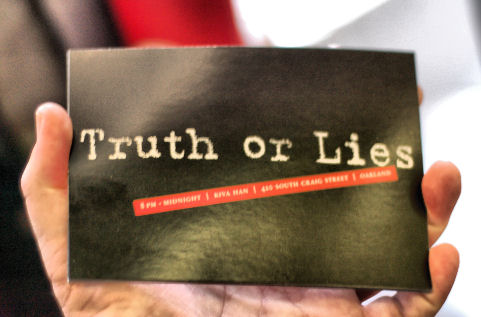
One thing I like about creative nonfiction is that it allows us to tell our weird, jacked-up stories without having to change little details and try to pass them off as made-up. After all, we’ve probably each read our peers’ work in some English class during the short story unit and thought, Wait a minute … this Tracy-with-a-conspicuous-rash character is actually Stacy from home room! Oh snap!
In creative nonfiction, Stacy can play herself.
But aside from the fun that comes from committing shameless acts of libel against your family and acquaintances, creative nonfiction is great because it lets you tell your own stories, and through that, lets your reader get to know you — the whole you, from silly to serious. I think it’s just about the best way of letting others know who you are, and one of the most lasting.
I also like that there’s really nothing you can’t talk about. Maybe there are things you shouldn’t talk about; I don’t know. In the essay that got me started doing creative nonfiction, I told the story about how I learned, at age 17, that girls’ breasts don’t always have milk in them. Most of my essays are kind of like that, leaning heavily on bodily misunderstandings and malfunctions, that is, which worried me, until I read one written centuries ago by the founder of the modern personal essay, Michel de Montaigne, which talked at length about erections and farts. After that, I was pretty much like, “game on.”
To go back to that point about creative nonfiction serving as a way to document yourself for other people, I think you’re going to discover that it’s as much about what you don’t say as it is about what you do. If you’re a visual artist, think of chiaroscuro. If you’re a musician, think of silence and rest. Case in point, If I write about how I tried — unsuccessfully — to play off a momentary loss of bowel control during a conference I foolishly held with a student when I had the flu, what I’m hoping my reader gets is that those conferences can sometimes be horrible for everybody involved, instructors, too. If I write all kinds of dumb little details about the crummy office I shared with a friend who died, what I want my reader to get is that I ache — ache — because that’s all of the world I’ll get to share with her. In each essay, I want the reader to know that I’m a real person, that there are both things I can’t get past and things I can’t get over. I think you’ll find that the trick is in the balance of what’s said and what’s not, which touches on something similar. What the reader sees on the page is you trying to make yourself understood, but what you hope the reader gets is that you’re really trying to understand yourself. The point is, you write, then you look back at what stands out in relief, in the silence of what you didn’t say, and that’s usually where you find your insight, and, with luck, where your reader finds you.
Dustin Michael is a doctoral student in English at the University of Missouri, where he studies creative nonfiction and teaches undergraduate courses in creative nonfiction and rhetoric and composition. His work has appeared in The Journal of Asinine Poetry, Big Muddy, and Rain Taxi.
